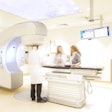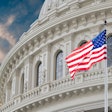
A group of 335 professional medical societies -- including 24 radiological and imaging organizations -- is urging Congress to increase rather than decrease funding to the U.S. National Institutes of Health (NIH) in 2021.
On February 10, U.S. President Donald Trump released a budget for fiscal 2021 that includes an 8% cut in funding to the NIH, from this year's $41.4 billion to $38 billion. But in a statement released the same day, the Ad Hoc Group for Medical Research called for the proposed federal 2021 budget to include $44.7 billion for the NIH, a $3 billion increase over its funding for fiscal year 2020.
"This funding level would allow for meaningful growth above inflation in the base budget and would expand NIH's capacity to support promising science in all disciplines across the agency," the group wrote.
The group includes the following imaging professional organizations:
- Academy for Radiology & Biomedical Imaging Research
- American Association for Women Radiologists
- American College of Radiology
- American Society of Emergency Radiology
- American Society for Radiation Oncology
- American Society of Emergency Radiology
- American Society of Neuroradiology
- American Society of Radiologic Technologists
- Association of University Radiologists
- International Society for Magnetic Resonance in Medicine
- Radiological Society of North America
- Society for Advanced Body Imaging
- Society for Cardiovascular Magnetic Resonance
- Society for Imaging Informatics in Medicine
- Society for Pediatric Radiology
- Society of Abdominal Radiology
- Society of Breast Imaging
- Society of Chairs of Academic Radiology Departments
- Society of Interventional Radiology Foundation
- Society of Nuclear Medicine and Molecular Imaging
- Society of Radiologists in Ultrasound
- Society of Skeletal Radiology
- Society of Thoracic Radiology
- World Molecular Imaging Society
"NIH-funded research not only has improved our understanding of the fundamental life and health sciences but also has facilitated development of ever-evolving diagnostic and therapeutic advances," the group wrote. "As a result, our ability to prevent, detect, diagnose, and treat diseases has increased dramatically over time."



















